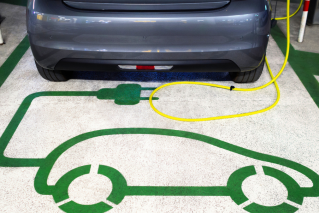Unemployment rate falls despite job losses after JobKeeper ends

Miscalculations potentially affected a number of Centrelink payments made before December 7, 2020. Photo: Getty
Australia’s unemployment rate has fallen despite more than 30,000 people losing work immediately after the JobKeeper wage subsidy wrapped up.
The official ABS employment figures show a fall of 30,600 people in employment in April, which is the first month of figures following JobKeeper’s end in late March.
However, the unemployment rate continues to edge lower, falling from 5.7 to 5.5 per cent on a big fall in the number of people looking for work.
The participation rate dropped from a record high 66.3 per cent to 66 per cent in April.
Despite the timing of the sudden swing from strong job creation to job losses, the bureau’s head of labour statistics Bjorn Jarvis said the end of JobKeeper did not have a discernible impact on employment between March and April.
“We have not seen large changes in the indicators that would suggest a clear JobKeeper impact, such as an increase in people working reduced or zero hours for economic reasons or because they were leaving their job,” he noted.
“Some of the 31,000 fall in employment may relate to the end of JobKeeper, but it could also reflect usual month-to-month variation in the labour market and some larger than usual seasonal changes similar to those we saw earlier in the year.”
Mr Jarvis said the Easter holidays were a major factor behind an unusually large 0.7 per cent drop in hours worked.
In fact, part-time jobs dominated the fall in employment in April (down 64,400) while full-time work increased.
Sarah Hunter from BIS Oxford Economics said the figures show “the easy wins from re-opening the economy and the resultant rebound in activity have largely been exhausted.”
“Looking ahead, the data is likely to become patchier and more ‘normal’ month-to-month,” she predicted.
“The May release may show more evidence of the end of JobKeeper, and the ability of workers to move from sectors with relatively weak demand to sectors which are booming will become an increasingly important factor in further increases in employment.”
Youth unemployment at post-GFC low
Despite last month’s fall in jobs, employment remains higher than it was in March 2020, before the pandemic temporarily shut down large swathes of the economy, although unemployment is also slightly up.
“The unemployment rate is now 0.2 percentage points (or 33,000 people) above the start of the pandemic,” Mr Jarvis observed.
“Importantly, it’s 2 percentage points below its peak in July 2020, when it was 7.4 per cent.
“The youth unemployment rate fell to its lowest level since the global financial crisis, reflecting a strong increase in employment for young men, following a number of increases for young women in recent months.”
Youth unemployment dropped 1.1 percentage points to 10.6 per cent and is now a full percentage point below pre-pandemic levels.
–ABC








